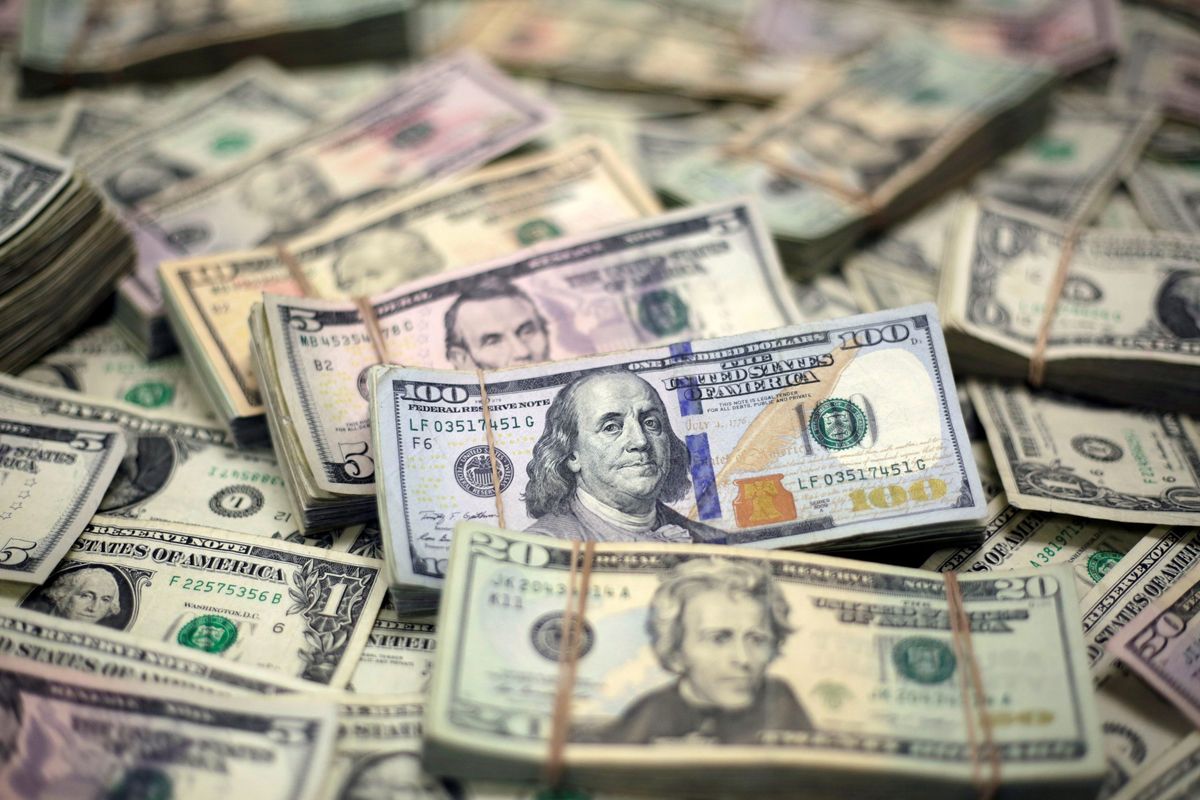Everything you need to know about the fight to lift the US debt ceiling

A few minutes every morning is all you need.
Stay up to date on the world's Headlines and Human Stories. It's fun, it's factual, it's fluff-free.
Moody’s Analytics predicted in early September that if the US defaulted for enough time, the economy would slide into a recession, with the gross domestic product (GDP) falling around 4%.
What’s going on with the US debt ceiling?
- The debt limit, also known as “the debt ceiling,” is the maximum amount of debt that the Department of the Treasury has allowed itself to issue within the United States.
- Think of the debt limit like going out to a bar for a drink; you know what your drinking limit is before it isn’t fun anymore, so you don’t cross it. Sure, you can go past that limit, but nobody, including yourself, is going to enjoy it.
- With nearly US$30 trillion in debt, the US blasted through its debt ceiling of US$22 trillion after the federal government took extensive measures to assist people in need during the COVID-19 pandemic.
- But the US government was able to stop itself from having a bad time and defaulting on the debt by just simply not worrying about the limit until July 31 of this year through a bill called the Bipartisan Budget Act of 2019.
- The Bipartisan Budget Act of 2019 meant that the country just bought another round so that everyone could keep rolling.
What does defaulting even mean?
- Just like anyone who’s had too much to drink, America’s friends are watching the country, waiting for it to realize that it’s taken in too much as they prepare to have an awful night out with America.
- Well, if taking on massive amounts of debt is like going out for drinks, defaulting on the debt is the night where everything is a mess, and nobody wants to hang out with the person who’s had too much.
- When people say “default” when talking about debt, they mean that the debt can’t be paid and can’t be managed sustainably. And so to prevent the US from defaulting on their debt and experiencing an economic black out, Congress has been meeting to raise the debt ceiling.
- But the issue now is that the Senate is locked in battle as Senate Minority leader Mitch McConnell has repeatedly said that his party would not vote to lift or extend the debt limit long term.
- So if we’re going to use our drinking analogy again, parts of the US government are also the bartender in this situation.
- On October 7, McConnell gave Democrats some breathing room, raising the US debt ceiling into December by a fixed dollar amount, removing the risk of an immediate default.
What would a debt default mean for the US?
- Moody’s Analytics predicted in early September that if the US defaulted for enough time, the economy would slide into a recession, with the gross domestic product (GDP) falling around 4%.
- There would be an increase in unemployment, with an estimated six million jobs lost.
- In the short term, interest rates would spike, and in the long term, they would never fall back to pre-default lows, which would lead to “enormous costs to taxpayers, consumers and the economy.”
- The report also wrote that, in the worst-case scenario, stock prices would be cut almost in one-third, which would wipe out US$15 trillion in household wealth.
Why does this matter for the rest of the world?
- In 1944, delegates from 44 allied countries met in New Hampshire to discuss which country’s currency would be established as the global currency to set fair international trading without putting any country at a disadvantage.
- Rather than linking the global reserve to gold, the delegates decided to establish the US dollar as the global currency because it was backed by gold.
- However, in October of 1976, the US dollar was decoupled from the value of gold and became an actual fiat currency – a currency not backed by a commodity.
- This decision affected countries other than the US as the US dollar had been established as the global reserve’s currency.
- By becoming an true fiat currency, the currencies that were backed by the US dollar became fiat currencies as well, all of which depended on the value of the US dollar.
- Currently, more than 85% of the world’s foreign exchange transactions are completed in US dollars meaning that if the US dollar were to suddenly lose its value due to an inability to pay back a debt, a massive amount of money would become undervalued.
So, what would happen?
- A lot.
- With the US being “the world’s anchor asset,” as Jacob Kirkegaard, a senior fellow with the Peterson Institute for International Economics put it, if the global economy realized that this asset wasn’t actually risk-free, “that would basically detonate a bomb in the middle of the global financial system. And that will be extremely messy."
- It would also massively hurt global trade. Not only would US consumers import less because it would become more expensive to buy overseas goods, but it would also cost US firms more to import their supplies.
- Now, what this means is three-fold. US businesses may increase the price of their products to cover their increased costs (meaning inflationary pressures), global trade will be reduced because of the increased costs for businesses and the nations that sell their goods to the US will also suffer from fewer orders.
- A debt default would be especially unstabilizing for economies that rely on the dollar to import goods because the ability to buy goods from overseas will also diminish.
- It may also pave the way for a new global currency to be adopted, such as China’s yuan.
What are experts saying about the potential default?
- When asked about the credible risks the US presents to the global economy, Dr. Tenpao Lee, a professor of economics at Niagara University, told TMS earlier this year that the damage could be irreversible.
- “It is certain that there is a limit and we cannot print money to stimulate the economy forever,” Dr. Lee said back in March.
- “The US is responsible for the most debt in the world. To raise its debt ceiling, which is approved and guaranteed by the US government, the US will stabilize the global economy in the short term but hurt the USD as a global currency in the longer term,” warned Dr. Lee. “It is a double-edged sword. Currently, the US has about US$28 trillion debt in contrast to US$23 trillion of its GDP. The US debt is at its highest level ever. As the strongest country in the world, the US must maintain the USD as a global currency by limiting its debt ceiling.”
- On Wednesday, US President Joe Biden gathered some corporate executives at the White House for a meeting.
- During the meeting, JPMorgan Chase & Co. Chief Executive Officer Jamie Dimon said the impact of the US defaulting on their debt “would be cascading, so day one would be bad but the cascading effects in the ensuing weeks could go anywhere from a recession to a complete catastrophe for the global economy.”
What’s next?
- Markets responded positively to Senator McConnell’s offer that “will also allow Democrats to use normal procedures to pass an emergency debt limit extension at a fixed dollar amount,” with the S&P 500 Index up 0.4% toward the end of Wednesday, which is compared to 1.3% fall from earlier this week.
- Despite the US edging further away from default, the risk of the US economy’s collapse is still a possibility.
- On Wednesday, the think tank, Bipartisan Policy Center, forecasted the estimated date of a payment default between October 19 and November 2.
- In a note, The Goldman Sachs Group, Inc. economists wrote that “ … there appears to be a material risk that Congress fails to act by the October 18 deadline.” But also added that if there were a failure to increase the debt ceiling by the deadline, that lapse would “probably be brief.”
You drive the stories at TMS. DM us which headline you want us to explain, or email us.







Comments ()